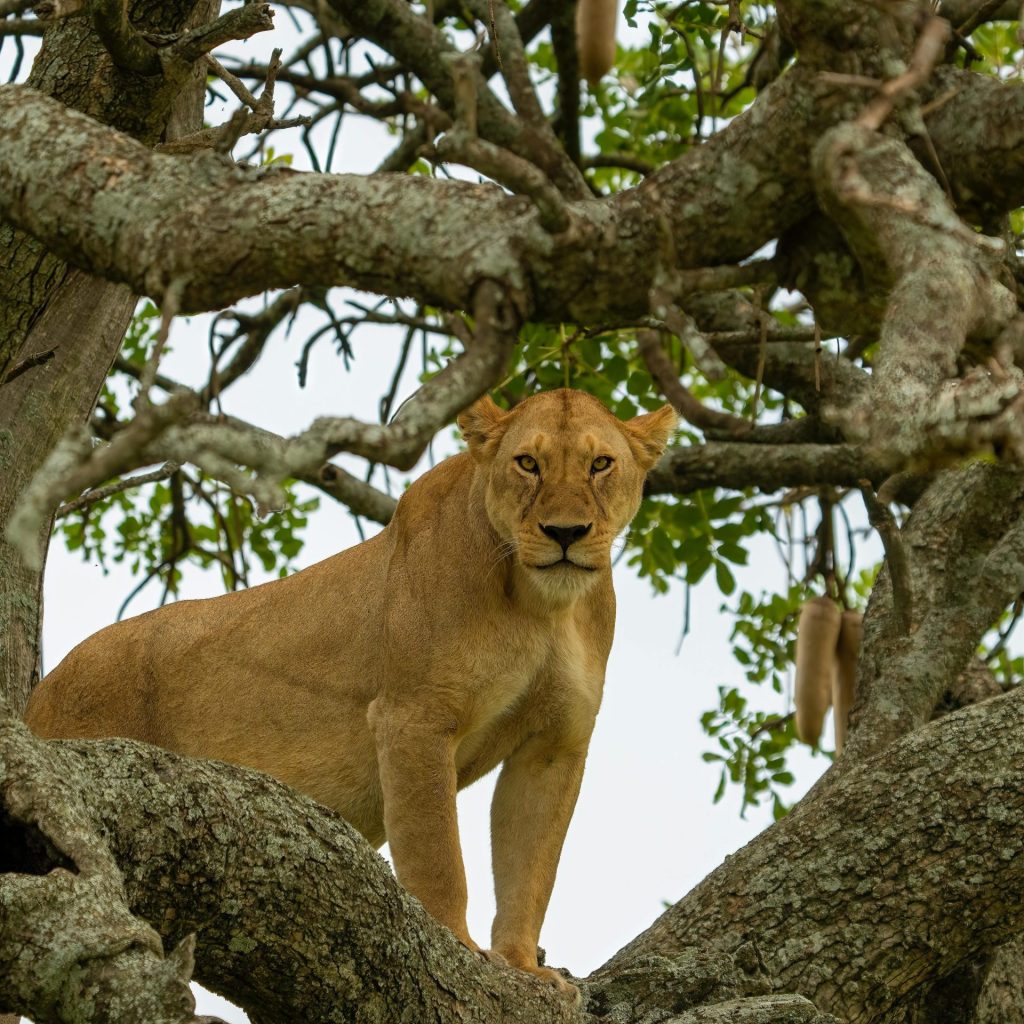
A Magical Safari Through Lake Manyara National Park
When it comes to jaw-dropping landscapes and wildlife encounters that stay with you for life, Tanzania never disappoints. And nestled between the dramatic Gregory Rift escarpment and the shimmering alkaline waters of Lake Manyara lies one of the country’s true hidden gems: Lake Manyara National Park.
From the moment we set off, excitement buzzed through the air. Our guests eagerly climbed into the safari vehicle, eyes wide with anticipation. They were about to experience a park filled with history, beauty, and some of the most unique wildlife Tanzania has to offer.
A Rich History Beneath the Wilderness
Lake Manyara might be known today for its wildlife and lush landscapes, but its history stretches back nearly a century. In the 1920s, the area was used primarily for sports hunting, a time when the beauty of the land was appreciated in a very different way.
That all changed when it was officially declared a national park, offering protection to the incredible species that call this place home. In 1974, the park was expanded to include the southern reaches, further securing its unique ecosystems.
Despite the lake itself being quite vast, the national park only covers the northwestern quadrant. Still, this narrow strip of land between the Gregory Rift valley wall and Lake Manyara is bursting with life. And for visitors, that means every turn of the road offers a new surprise.
A Landscape Like No Other
The park’s layout is unusual but striking. To the west towers the steep wall of the Rift Valley, and to the east glimmers the expansive, alkaline Lake Manyara. This narrow corridor creates an incredibly diverse environment, where forests, grasslands, swamps and lakefront coexist, attracting an astonishing range of wildlife.
It’s no wonder that Lake Manyara has become a must-visit for safari enthusiasts looking to go beyond the more popular Serengeti and Ngorongoro. Here, you’re greeted with not only iconic African species but also intimate, often unexpected animal encounters.
Flamingos, Baboons, and Everything in Between
As we journeyed deeper into the park, the sights kept getting better. Our guests scanned the horizon with eager eyes, hoping to catch a glimpse of anything that moved. And the park delivered, again and again.
First came the troops of baboons, bold, social and endlessly entertaining as they crossed the road with total confidence. Next were the blue monkeys, darting through the treetops with grace and agility.
And then came the highlight of the day: a spectacular group of flamingos, gathered around the lake in their signature blush-pink brilliance. These beautiful birds are a staple of Lake Manyara’s identity, and seeing so many of them up close felt like stepping into a nature documentary.
It was the kind of moment that takes your breath away. Cameras clicked, jaws dropped, and for a few minutes, all anyone could do was watch and listen to the peaceful rustle of wings and wind.
More Than Just a Day Trip
Our adventure didn’t end with the afternoon safari. As the sun began to set behind the Rift Valley wall, we made our way to a nearby lodge, nestled in the heart of nature. The peaceful surroundings and distant calls of nocturnal wildlife set the tone for a magical evening.
Dinner was served under the stars, with the soft sounds of the African bush all around us. For many of our guests, it was their first night truly immersed in wild Tanzania, a night without city lights, without noise, just the rhythm of the natural world.
It’s hard to put into words the feeling of waking up at dawn in a place like this. The sunrise cast golden hues across the sky, and before the world had fully stirred, we were already back in the safari vehicle, continuing our journey back toward Arusha.
The Return Journey, But Not Without More Wonders
Even as we made our way out of the park, Lake Manyara continued to surprise us. Impalas grazed calmly in the morning light, hornbills called from high in the trees, and a family of warthogs trotted off into the bush.
It was one last reminder of the park’s quiet magic, that sense of wonder that lingers long after you’ve left its borders.
Why Lake Manyara Should Be on Your Safari Bucket List
If you’re planning a safari in Tanzania and looking for something a little more off the beaten path, Lake Manyara National Park should absolutely be on your itinerary. Here’s why:
- Incredible birdlife, especially the flamingos
- Unique geography, with lake views, forest and rift valley cliffs
- A chance to see baboons, blue monkeys, and other lesser-known animals
- Fewer crowds than major parks
- Close proximity to Arusha, making it perfect for short trips or as part of a northern circuit safari
Tips for Visiting Lake Manyara
To make the most of your visit, here are a few quick tips:
- Best time to visit: June to October (dry season for better animal viewing)
- Don’t forget: Binoculars, a camera with a good zoom lens, sunscreen, and insect repellent
- Early morning or late afternoon safaris often give you the best light and animal activity
- Pair your visit with nearby destinations like Ngorongoro Crater or Tarangire National Park for a fuller experience
Ready to See It for Yourself?
Lake Manyara National Park is more than just a beautiful stop on a safari map, it’s a place where nature, history and serenity meet. From its dramatic landscapes and quiet lake shores to its rich wildlife and peaceful nights, it offers an experience that stays with you long after your journey ends.
Whether you’re a wildlife enthusiast, a birdwatcher, or simply a curious traveller, Lake Manyara invites you to slow down, look closely, and feel truly connected to the wild heart of Tanzania.
So, what are you waiting for?
Pack your bags, charge your camera, and come see it for yourself, the flamingos are waiting.
